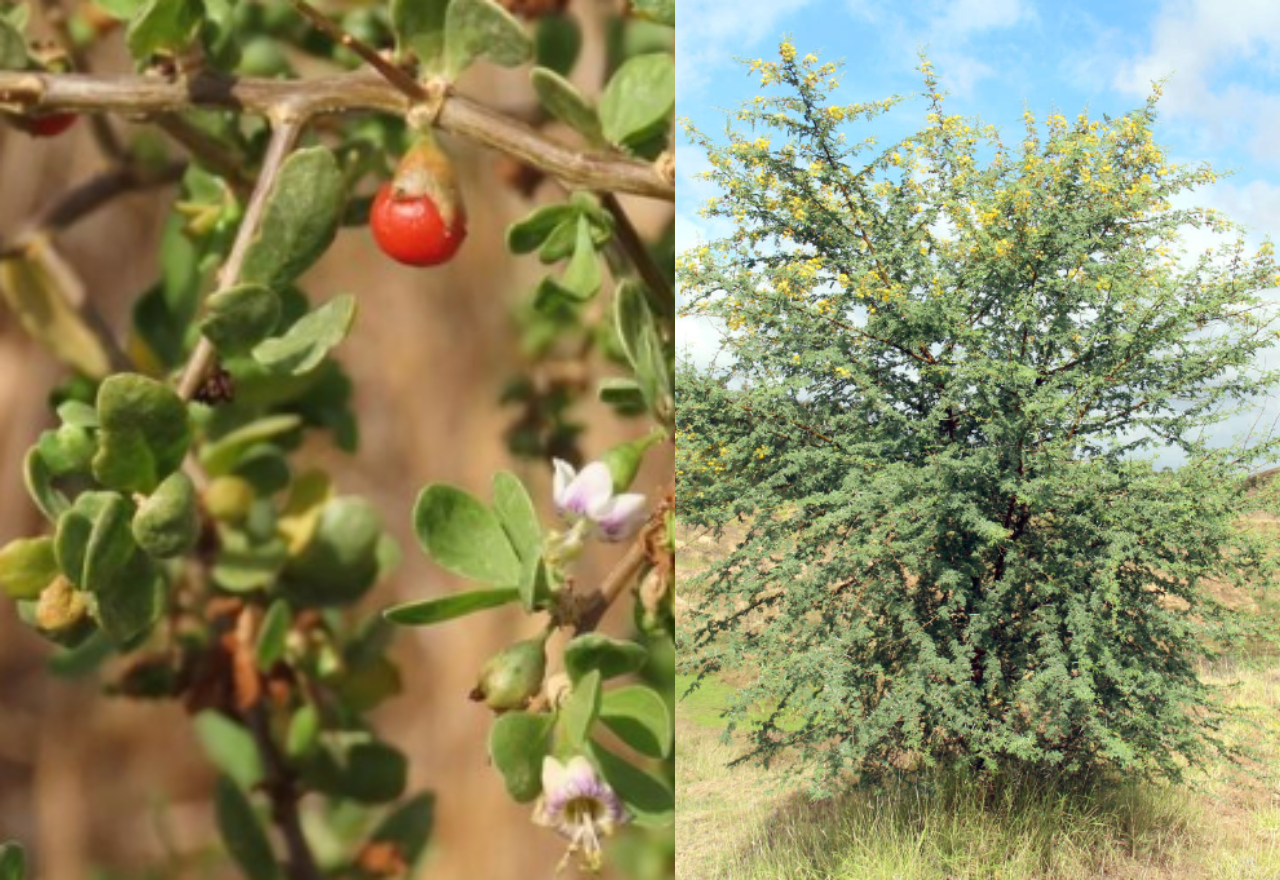CISS to lead $5.9m national project to boost future drought resilience
04 November 2025, 6:59 PM
 African Boxthorn and prickly acacia on the list for biocontrol
African Boxthorn and prickly acacia on the list for biocontrolThe Centre for Invasive Species Solutions (CISS) will lead a five-year, $5.9m project funded by the Australian Government’s Future Drought Fund via a national weed biocontrol consortium comprising CSIRO, Queensland’s Department of Primary Industries, Agriculture Victoria and NSW’s Department of Primary Industries and Regional Development.
The ‘Nation-wide Weed Biocontrol Mass-Rearing and Release Network for Enhanced Drought Resilience in Australia’s Agricultural Landscapes’ initiative is one of eight projects under the Future Drought Fund’s commitment to improving landscape function and ecosystem services for drought-resilient farms and landscapes.
African boxthorn, prickly acacia, horehound, various cactus species and three aquatic weeds – cabomba, sagittaria and salvinia – are the species prioritised for biocontrol due to their impact on Australia’s agricultural productivity, biodiversity and drought resilience. Aside from horehound, all are Weeds of National Significance.
The project will support the mass-rearing, release and monitoring of nine biocontrol agents – from a rust fungus to longhorn beetles and cochineal bugs to gall thrips – aimed at suppressing these invasive weeds and improving pasture quality, water security and environmental values ahead of future drought conditions.
CISS’s Chief Executive Officer, Shauna Chadlowe, said, “We’re incredibly grateful to the Australian Government and the Department of Agriculture, Fisheries and Forestry for their leadership and significant investment through the Future Drought Fund. Their support is what makes this ground-breaking project possible.”
“We’re also proud to be working with this group of outstanding delivery partners who bring not only technical expertise but also financial and in-kind support, which lifts the total resources to drive this national collaboration to $11m.”
“For the first time in Australia, this project will establish a nationally coordinated, multi-jurisdictional consortium of partners to fast-track delivery of weed biocontrol agents through an Australia-wide biocontrol agent mass-rearing, release, monitoring and evaluation network.”
“This project maximises on-ground outcomes by fast-tracking and upscaling the release of approved biocontrol agents and biocontrol research capability, facilities, and stakeholder networks.”
“The weeds targeted by this project are among the worst in Australia – they degrade landscapes, threaten biodiversity, and reduce productivity. Some, like African boxthorn, with its harsh spikes, impacts graziers by preventing livestock from accessing water points. Others, like cabomba, sagittaria and salvinia choke irrigation channels and waterways, adding stress in times of drought when water resources are already scarce.”
“We’re proud to lead this ambitious project alongside our delivery partners. It brings together cutting-edge science, national coordination and bold thinking to deliver smarter, more sustainable solutions for tackling invasive weeds and strengthening Australia’s drought resilience,” said Ms Chadlowe.
NSW Department of Primary Industries and Regional Development, Dr Andrew McConnachie, Research Leader Weed Biocontrol, said, “This vital funding marks a significant step forward in protecting Australian landscapes and water systems from the devastating impacts of invasive weeds like Hudson pear, salvinia, cabomba, and sagittaria.”
“By investing in biocontrol, we’re not only safeguarding biodiversity and agricultural productivity, but also building resilience against future droughts. These weeds threaten water availability and ecosystem health, and this initiative ensures we’re better prepared for the challenges ahead.”

